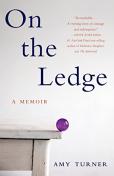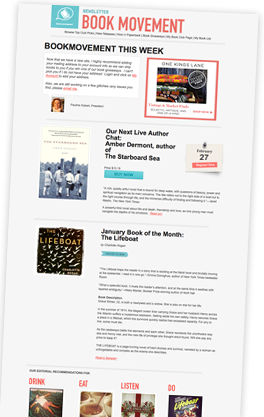BKMT READING GUIDES
On the Ledge: A Memoir
by Amy Turner
Paperback : 280 pages
0 club reading this now
0 members have read this book
Introduction
In 1957, when Amy Turner was four years old, her father had to be talked down from a hotel ledge by a priest. The story of his attempted suicide received nationwide press coverage, and he spent months in a psychiatric facility before returning home. From then on, Amy constantly worried about him for reasons she didn't yet fully understand, triggering a pattern of hypervigilance that would plague her into adulthood.
In 2010, fifty-five years after her father’s attempted suicide, Amy—now a wife, mother, and lawyer-turned-schoolteacher—is convinced she’s dealt with all the psychological reverberations of her childhood. Then she steps into a crosswalk and is mowed down by a pickup truck—an accident that nearly kills her, and that ultimately propels her on a remarkable emotional journey. With the help of acupuncture, somatic-oriented therapies, and serendipities that might be attributed to grace, Amy first unravels the trauma of her own brush with death and then, unexpectedly, heals the childhood trauma buried far deeper.
Poignant and intimate, On the Ledge is Amy’s insightful and surprisingly humorous chronicle of coming to terms with herself and her parents as the distinct, vulnerable individuals they are. Perhaps more meaningfully, it offers proof that no matter how far along you are in life, it's never too late to find yourself.
Editorial Review
No Editorial Review Currently AvailableExcerpt
PROLOGUE On a cold November morning in 1957, as Yale students crossed the green to their first classes, hotel employees cleaned up breakfast dishes, and three priests went out for a walk, my father, pajama-clad and barefoot, climbed out on the ledge of his hotel window and threatened to jump. Some fifty feet below, the fire truck arrived. Three firemen cranked the extension ladder to the floor below him while others tried to gauge a jump’s trajectory and positioned a circular net. Those in the growing crowd craned their necks to take in every moment of the unfolding drama. Soon, hundreds of people were staring up at him. My mother, at home in Bronxville, New York, had awakened with an uneasy feeling—a low rumbling in her head, perhaps. She called my father’s hotel room. When he didn’t answer, she might have pictured him standing on the front porch of our house again, a fresh bloodstain on the front of his shirt. The injury had been superficial—from a penknife, it turned out—but having been self-inflicted, it was hard to forget. It’s possible that she thought about pouring a scotch, but maybe the effect of last night’s half bottle, or the memory of my father’s confident smile as he boarded the train to New Haven that morning, reassured her. Still getting no answer, my mother phoned my father’s business colleague, who was staying in the room next to him, and asked that he check in on him. When he called back to say that her husband was standing on the hotel ledge, she called a close family friend, who drove her to New Haven. Around the same time, the three priests out on their walk heard the commotion and hurried to the hotel. Father Keating and the prior dashed up to my father’s room while Father Murphy remained on the sidewalk, ready to administer last rites, if necessary. When my mother saw my father next, still in his pajamas and seated in a wheelchair at the hospital admissions desk, he just stared at her. She leaned forward and cupped her palms over his hands. His knuckles, a range of bony peaks, did not soften. She moved an inch closer. “Har . . . old?”? Still no response. The doctor, glancing up from the counter where he was signing forms, answered for him, “Catatonic.”? Later that afternoon, a New York City reporter conned his way into our house. Our maid, home alone and no doubt distracted by her four charges, didn’t notice him pocketing a family photograph. —— I was four and a half years old at the time, and all I knew for sure was what I could see—a father who sat behind a brown desk in my parents’ bedroom, a mother who paused only to light a cigarette as she flashed by, a wrinkly-faced maid who yelled at us, a skinny black dog named Skeeter who ran away when I raised my arm, and an older sister who read me a book sometimes. I also had two younger brothers, but I hardly perceived them as separate from me. We were so close in age, we were like an amoeba whose edges could bulge out in three directions at once. But it must have been soon after my father climbed onto the ledge when I began to sense something else coexisting in our house. If I’d known the word at four and a half, it might have been “trapdoor.” I was certain that at any time and without warning, the floor could snap open, swallow one of us, and slam shut in a nanosecond. A trapdoor was invisible, of course, but I patrolled the house nonetheless, searching for warning signs—a retreat in my father’s eyes, or a loosening in my mother’s white- knuckled grip. In my family, loving or being loved was secondary. First, we had to avoid the trapdoors. And by the time I was sixteen and was finally told the truth about what had happened in 1957, I had been on high alert for a dozen years, the pattern so deeply ingrained that it would take another forty years to understand and undo it.Discussion Questions
1. In addition to counseling, Amy received somatic-oriented therapies to release the trauma stored in her body. Do you think different kinds of therapies help different kinds of people?2. How did using humor shape Amy’s identity? How did it shape the writing in this book?
3. How did secrets affect Amy’s family?
4. Amy writes with great compassion toward her parents. Did this surprise you? What allowed her to feel compassion instead of anger?
5. At age 48, Amy changed careers, leaving the legal field to become a teacher. Did her decision inspire you?
6. Later in life, Amy sought to find the priest who talked her father off the ledge. She also sought the original records and pictures of his attempt. How did this outreach and research affect Amy? How did they affect the writing of her memoir?
Book Club Recommendations
Recommended to book clubs by 0 of 0 members.
Book Club HQ to over 90,000+ book clubs and ready to welcome yours.
Get free weekly updates on top club picks, book giveaways, author events and more








